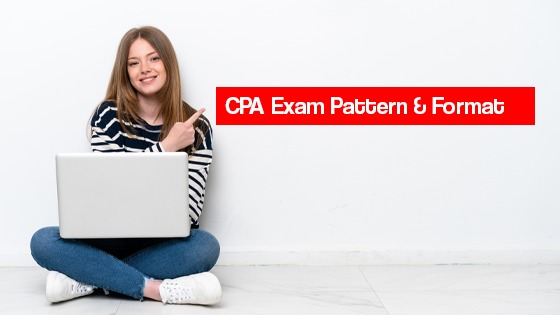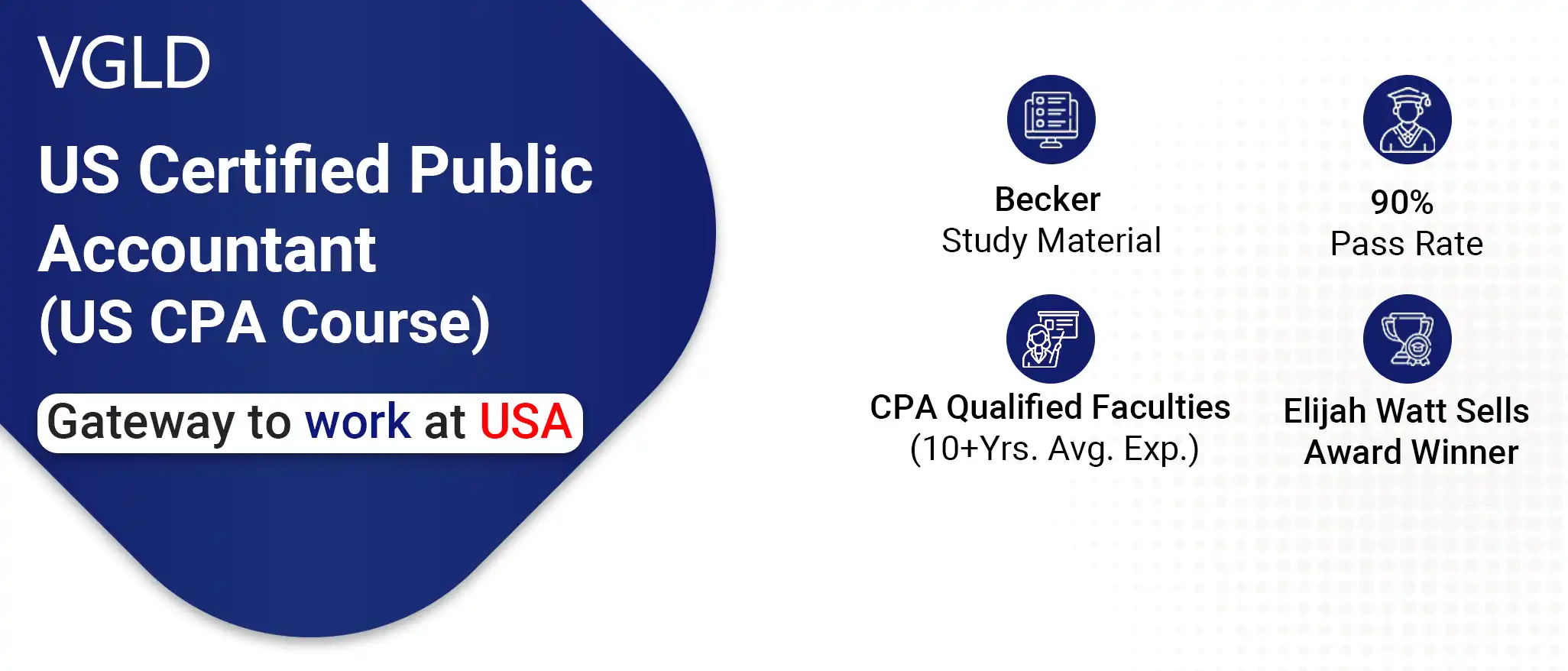Of late, we have been hearing about the US CPA program a lot, primarily, as these exams are now being conducted in India. Although a lot of basic information is available with the aspirants regarding the
- Number of Sections
- Exam frequency
- Eligibility criteria etc. just to name a few, not really sure how many are actually aware of the exam pattern, testing criteria, knowledge and skills tested, score weightage etc.
In this article, we are going to deep dive into all the aspects relating to the US CPA exams. Let’s start with the four CPA exam subjects commonly referred to as CPA exam sections:
- Financial Accounting and Reporting (FAR)
- Auditing and Attestation (AUD)
- Business Environment and Concepts (BEC)
- Regulation (REG)
Before these sections are discussed in detail, it is better to understand the other aspects like
Exam Pattern / Structure
Each of the above exam sections comprises of five smaller sections which are called test lets. Each of the tests has different item types in order to test the knowledge and skills of the candidates. There are three different types of exam items that will appear within the specific test lets in each section
- Multiple choice questions (MCQs): These will be presented in the first two testlets of each exam section
- Task Based Simulations (TBS): These are in the form of case studies. There would be 3 TBS testlets in AUD, FAR and REG exam sections and 2 TBS testlets in the BEC section
- Written Communications Tasks: These appear only in the BEC section and would be in the form of a memo/ letter.
Following is the design of the exam by section, section-time and question type
- As these exams are for 4 hours each, it is very important that we accustom ourselves to sit continuously under examination conditions, for this it is advisable to take mock tests before appearing for the main exam
- Time management is of utmost importance as spending too much time on mcqs might not prove a fruitful strategy to clear the exam.
Next is the table that presents the weightage of the multiple-choice questions, task-based Simulations and written communications for each exam
- Both mcqs and task based simulations carry equal weightage, however as TBS are in the form of case studies, they are bound to consume more time than mcqs. It is advisable to complete the mcqs at the earliest and move on to the TBS.
- The research simulations can be used to look for responses for other simulations as well provided the time is available.
- It is better to keep some time for a quick revision
Exam Duration
Maximum four and a half hours are available to complete the exam. Look into the below image you will get the clear idea about the exam duration. Based on this, plan yourself like how to segregate the time during CPA exam.
Introduction to the CPA exam sections / Exam Subjects
Financial Accounting & Reporting (FAR)
FAR imparts the knowledge and skills required by the Financial Accounting and reporting frameworks used by business entities both public and non-public, not for profit entities and state and local government entities.
The frameworks that are mainly tested on the FAR exam section include
- Financial Accounting Standards Board (FASB)
- Governmental Accounting Standards Board (GASB)
- International Accounting Standards Board (IASB)
- American Institute of Certified Public Accountants (AICPA)
- U.S. Securities and Exchange Commission (U.S. SEC)
When answering questions in the FAR exam section, one should assume
- All the information provided in each of the questions is material.
- Each question applies to a for-profit business entity under US GAAP unless e question specifically mentions not for profit
- Questions specific to IFRS include the phrase such as “according to IFRS” or “under IFRS”
- Questions specific to the state and local government include the phrase such as “ state government”, “local government”, “city” or “municipal
Auditing (AUD)
AUD is one of the four sections of the CPA exam. It tests candidates on their knowledge and skills related to performing audits of financial statements in accordance with professional standards. The exam covers topics such as audit risk, internal control, audit procedures, and audit reports. The exam is designed to test candidates on their knowledge and skills in the following areas:
- Audit Risk and Materiality: This includes understanding the concept of audit risk and how to assess and respond to it, as well as understanding the concept of materiality and how it affects the audit process.
- Internal Control: This includes understanding the types of internal control systems that may be in place at an entity, how to assess the effectiveness of these systems, and how to design and perform audit procedures to test their effectiveness.
- Audit Procedures: This includes understanding the various types of audit procedures that may be used during an audit, such as substantive procedures and tests of controls, and how to design and perform these procedures to obtain sufficient appropriate evidence to support the audit opinion.
- Audit Reports: This includes understanding the types of audit reports that may be issued, the requirements for each type of report, and how to draft and prepare audit reports that are clear, concise, and accurate.
The AUD exam is structured as a computer-based test consisting of multiple-choice questions, task-based simulations, and written communication tasks. The exam is four hours long and consists of a total of 72 questions.
Overall, the AUD exam is designed to assess an individual’s knowledge and skills in the area of auditing and to ensure that they are able to perform audits in accordance with professional standards. It is an important step in becoming a certified public accountant in the United States.
Business Environment and Concepts(BEC)
BEC imparts the knowledge and skills that help perform
- Financial reporting
- Audit, attestation, accounting and review services
- Tax preparation
- Other professional responsibilities
With the knowledge and use of internal control frameworks, enterprise risk management framework, regulatory frameworks and laws such as Sarbanes Oxley Act 2002 along with the knowledge and skills in many other areas.
Regulation (REG)
REG imparts the knowledge and skills that help perform
- U.S. federal taxation
- U.S. business law
- U.S. ethics and professional responsibilities related to tax practice
This should help the aspirants in planning and preparing for the US CPA exams in a much better manner. Happy Learning!!!
Below are answers to some of the most common questions regarding CPA examination content and scoring. A detailed study of these FAQs is expected to help potential students be better prepared to what is to come.
FAQs
Q. Which subjects/papers are covered in CPA exam?
Ans. CPA exams test students on below four subjects:
- Auditing & Attestation (AUD)
- Business Environment & Concepts (BEC)
- Financial Accounting & Reporting (FAR)
- Regulation (REG)
Q. Would I have access to any reference materials/database to be made available during my CPA exam?
Ans. Yes, for questions related to simulations (case studies), all candidates would have access to valid literature related to each subject. For e.g., for Auditing & Attestation – few sections of the AICPA Professional Standards; for Financial Accounting & Reporting – FASB Codification and for Regulation – Tax Code.
Q. What is the training method at VGLD for CPA curriculum?
Ans. Training at VGLD for CPA would comprise of below:
- Weekend classes (Saturday & Sunday)
- 10 hours weekend classes
- 260+ hours of live online training
- Self-paced learning content by Becker Professional Education
- 24*7 access to online program material
- 240+ hours of exclusive recordings
- 6500 MCQs
- 250 task-based simulations and study planner
Q. I have registered with VGLD for CPA curriculum, would I receive any study material?
Ans. Yes, all students registered with us would have access to below exclusive content from Becker Professional Education, all-round online program material, practice questions and access to mock exams.
Q. Would I have access to any mock tests?
Ans. Yes, all students registered with us would have access to exclusive mock tests by Becker Professional Education. These tests would help you become familiar with the format and functionality of exam in the same format to be used on the exam day.
Q. Are there any recommended computer requirements to take mock tests?
Ans. Mock tests are generally web-based and simply require a stable internet connection and a standard size monitor (preferably 23-inch HD) for an experience similar to an actual test center.
Q. What if I encounter an issue while appearing for mock tests?
Ans. First ensure that you meet all the minimum requirements of required equipment. In case, you still face issues then please contact VGLD team for any assistance.
Q. What is the passing score in CPA exam?
Ans. Passing score is 75 on a scale of 0-99 and these scores are not curved.
Q. Who determines the passing score for CPA?
Ans. Passing score is determined by the AICPA who decide the score based on many factors like standard-setting study results, past trends and content changes in study material. AICPA also receives recommendations from NASBA, consultant psychometricians, the academic community, and licensed CPAs.
Q. Is there negative marking in CPA?
Ans. No, there is no negative marking in CPA.
Q. How long do I have to wait for CPA results?
Ans. Results are frequently released on a rolling basis. Typically, one can expect a release of results within a 7-9 days of exam date.
Q. Which model is used by CPA to test my skills?
Ans. CPA tests your skills based on an adaptive model for all MCQs, i.e., your first set of questions would be at a level of moderate difficulty. Based on your performance in this set, questions in next set would be at the same level or slightly more difficult.
Q. Is this adaptive model of testing fair for everyone?
Ans. Yes, it is fair. Since characteristics of test questions are considered for scoring purposes, there is no added advantage/disadvantage to any student.
Q. How does CPA determine level of questions?
Ans. Difficulty level of questions are determined based on statistical analysis of student responses. Each question is assigned a numeric value in form of scale.



